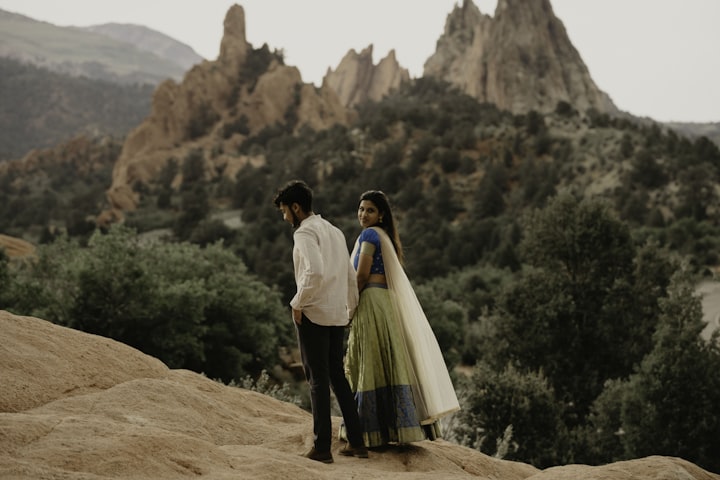
For most of the history of the engagement ring, there was no actual diamond in the ring; it was just a band. In 1477, Archduke Maximilian of Austria gave Mary of Burgundy a ring with a square-cut diamond, and the diamond engagement ring was born. This history is rich - and diamonds became a gift selected by men, for men, to give to brides.
At the time, diamonds were reserved for royalty, so this was a pretty big deal. The diamond engagement ring became the norm in the Victorian era, though many couples chose cheaper cuts of diamond. It also became common to set the diamond in a gold ring, rather than a cheaper material such as silver. "It became widespread during the Victorian era and, according to the Metropolitan Museum of Art, the practice of giving diamond engagement rings to the bride was cemented in the United States in the 1920s," according to History.com. Engagement rings continued to be popular into the 1940s, when World War II caused a shortage of the material. According to Business Insider, the engagement ring started to fall out of favor in the 1960s and 1970s, when it became a symbol of the patriarchy. It became popular again in the 1980s and 1990s, according to The Knot, but the custom has continued to be a symbol of the woman's value in the relationship.
Why does this history stay with us?
In ancient times, showing someone you wanted to marry them was as simple as plunking down a chunk of your savings—not exactly the most romantic gesture. Back then, engagement rings were more like a down payment on a cow. The more valuable the ring, the more cows you got to buy. However, things started to change in 1477 when Archduke Maximillian of Austria proposed to Mary of Burgundy with a ring that wasn't worth anything. He apparently did this as a sign of love, which ended up changing the engagement ring forever.
How did you get a diamond?
The term "diamond" is actually a misnomer. The word is derived from the Greek adamas, which means "unconquerable." Diamonds are actually the hardest known substance on earth, which is why they've become the ultimate symbol of love. Although diamonds weren't always considered the most valuable gemstone—that title went to rubies—in the 16th and 17th centuries, they became the most popular by far.
How did we get the four-pronged setting?
The open, four-pronged setting of today's engagement ring actually has its roots in the 16th century. Originally, the only way to set a stone was to bezel set it, which involved setting it into a groove carved out of the band. But over time, jewelers started to use prongs instead, which allowed for a much more secure setting.
Why do we say "yes" with a ring?
Although there's no specific story behind this tradition, it's thought that medieval couples would wear rings on their left ring finger to show that they were engaged. And after a while, the ring would simply be accepted as a symbol of an engagement.
What do the prongs on the ring represent? According to legend, the prongs on the ring are supposed to represent the "four eyes" of two people in love. However, in reality, the prongs are there to hold the diamond in place and give it more security. How do I care for my ring? First off, you can't wear your diamond ring when you're doing anything that involves dirty hands or water. You also need to be extremely careful when you're doing stuff around the house, as you could easily damage your ring. When you're not wearing your ring, it's important that you store it in a safe place. And when you're finally ready to put it back on, you should always make sure it's clean and dry first.
About the Creator
Adam Naor
Senior Partner Manager — Startups @ Amazon. Helping WFHAdviser.com. Previously Cornell Tech, BRV Fund, Google.






Comments
There are no comments for this story
Be the first to respond and start the conversation.